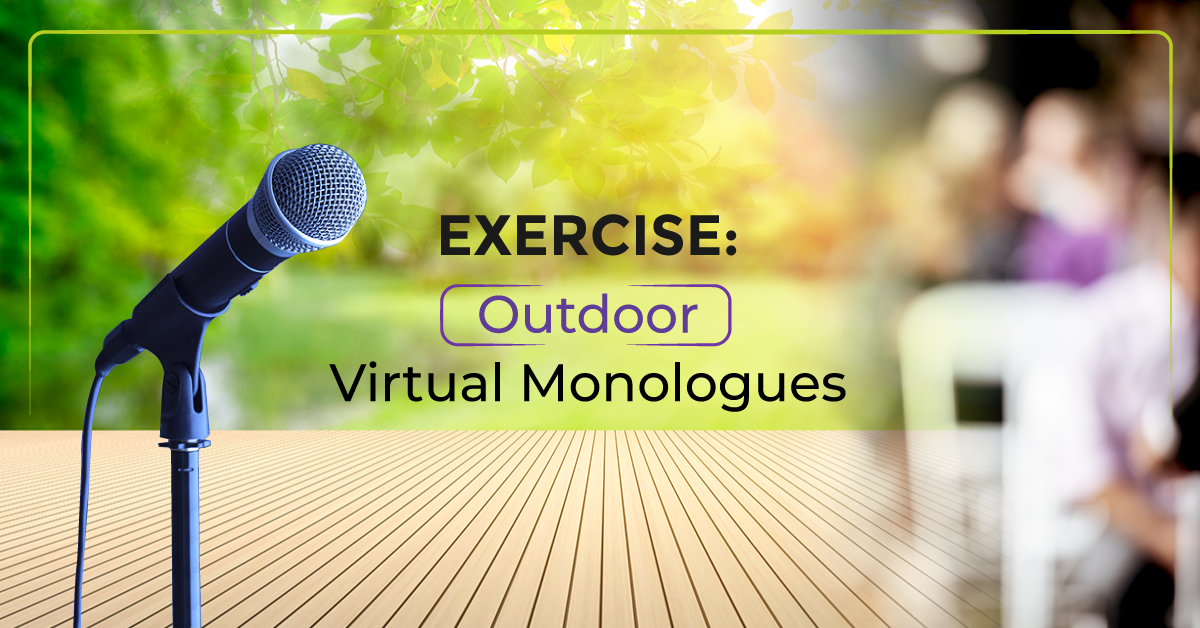A squirt gun would never be mistaken for a real gun, right? Dive into the thought-provoking world of Water. Gun. Argument and challenge what we choose to believe. A thought provoking and powerful piece in a docu-theatre style.
How to Deal With Disruptive Students
Keeping students focused and engaged is challenging enough in the drama classroom. It can be just as challenging trying to deal with disruptions in the virtual classroom, because you’re not physically there with them. We’ve got some tips for you to help navigate student behaviour in the virtual drama classroom and deal with distractions as best as possible.
Remember that not all disruptions are inherently negative.
We often think of disruptive behaviour as rudeness or bad attitudes. However, when students are in their homes, there will be more distractions and a stronger likelihood of students not thinking about how their behaviour translates online. Students don’t realize that getting up in the middle of class to go to the bathroom, grabbing a snack, snuggling their pet, or checking their phone – all regular home behaviour – can be distracting and disruptive, no matter how subtle they think they’re being.
Be clear about your expectations, but know that you’re likely going to have to adjust and be flexible.
Explain your virtual classroom rules and expectations right away, but be prepared to adjust them. There is a natural separation between you and your students when connecting online. Discuss with your students what their expectations are for distance learning etiquette, compare them with your own, and adjust from there. Know that some students won’t look at the camera, interact with you, or acknowledge that they’re paying attention or understanding the material. If they aren’t being outwardly disruptive, keep forging on with the lesson as best you can.
Use the “mute” button liberally.
Most online learning platforms have a “mute all” function. Learn how to use it, and know whether or not students are able to un-mute themselves. Have students make a gesture to indicate they’d like to speak, or use non-verbal feedback functions (such as “raise hand” or “thumbs up”) if your system has those features.
Avoid repeating yourself.
If a student chooses to be disruptive or not pay attention, let them figure out what they missed. Give limits on the number of questions you answer. It’s easy for students (particularly younger ones) to get you off track by asking questions or wanting to share an anecdote. If your video conferencing program has a written chat box, you may want students to submit questions there rather than asking them verbally to reduce distractions.
Get active and take breaks.
Drama class is normally a great way for students to get active and expend energy during a regular school day, but distance learning usually requires students to sit in front of a screen for long periods of time. To reduce the chance that students will get squirrely and disruptive, try to do warm-ups and exercises that get students up and moving, and take breaks when you can. You may also want to try giving students a few free minutes at the beginning of class to talk to their classmates, to avoid interruptions later in the class.
Consider rewards versus consequences.
You can’t exactly send a disruptive student to the principal’s office when teaching virtually. Try to focus on rewards and positive reinforcement for good behaviour, such as verbal or written praise (check out this post for 20 Ways to Praise Your Students), or virtual rewards such as time to play improv games or do another fun group activity.
Get to the root of the disruption.
Put on your detective cap and figure out the reason for the disruption. Does the student truly not understand the assignment? Are they having technical issues with their device and can’t hear you? Are they trying to impress their classmates? Are they only taking drama because they have to? Are they unhappy about the fact that they have to do distance learning, rather than going to school in person? Is there something going on at home? There’s always a reason for negative behaviour. Reach out to your student (privately!) to see if you can get a conversation going. Determine an action plan going forward, and check in regularly to see how they’re faring.
Additional Resources:
- Adjusting Your Expectations During the Rehearsal Process
- Communicating Classroom Expectations vs. Rehearsal Expectations
- “Act It Out” Game: Virtual Edition
- Encouraging Active Listening in the Digital Classroom
- Accountability: In Rehearsal, the Classroom, and as a Citizen
